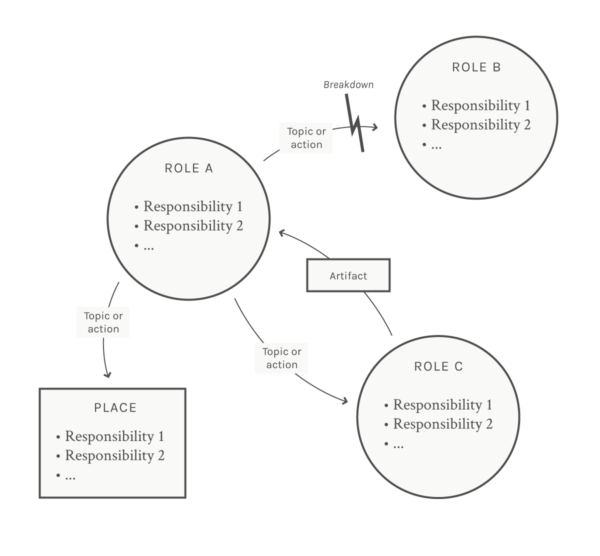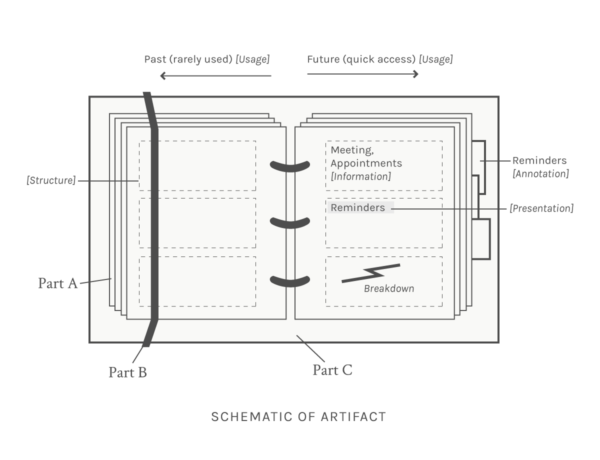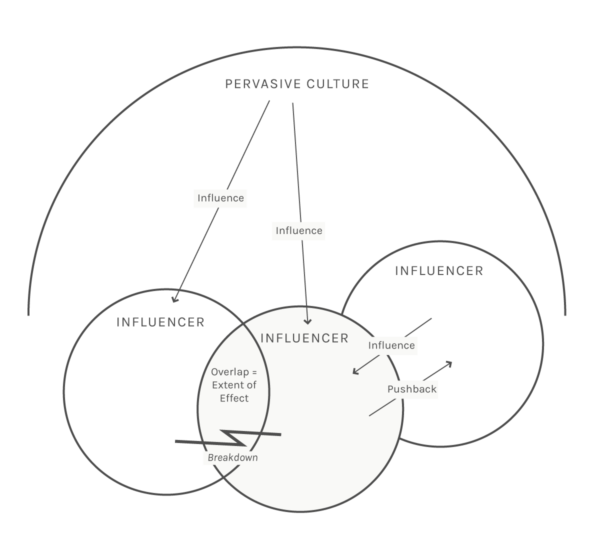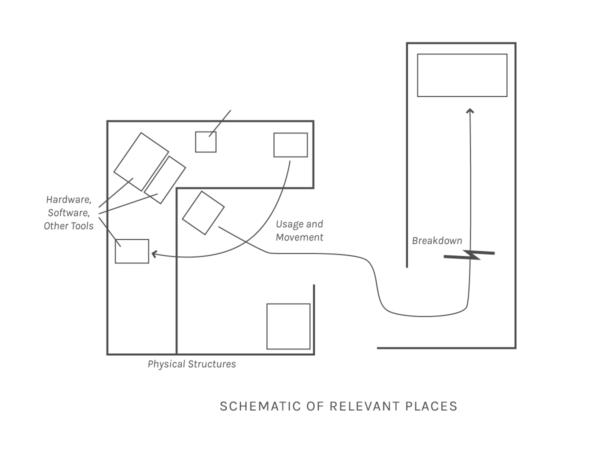Contextual Design • Karen Holtzblatt and Hugh Beyer • 1998
On Work Models
In Short
Designers should use a diversity of models when understanding users in order to get a holistic view on what they are designing.
In Depth
The majority of the book examines the use of visual models as a shared language to frame, conceptualize, and discuss complex work practices among a large team. The authors offer five ways to model work. A large part of the Contextual Design process is building these models, consolidating them, and using the resulting consolidated models as drivers for design.
Flow Model
Work flow defines how work is broken up across people and how people coordinate to ensure the whole job gets done. (p.90)
The flow model identifies roles within a work practice and focuses on flow of actions or communications between them. Responsibilities of each role are outlined and any key places or artifacts involved in transactions are identified.

When multiple flow models are aggregated, the consolidated flow model can be used to balance the responsibilities of roles. Roles with too many responsibilities or that are split between too many people can be addressed appropriately. Roles that are too isolated from others can be reconnected. Individuals who have to switch roles frequently can be supported better.
Sequence Model
A sequence model represents the steps by which work is done, the triggers that kick off a set of steps, and the intents that are being accomplished. (p.97)
The sequence model focuses on the element of time. It follow a specific sequence of steps that unfold through time, identifying the intents behind each sequence and the triggering events. Breakdown or problems between steps can be made apparent.

When similar intents and steps between sequences are abstracted and grouped, the resulting consolidated sequence model helps to get a more textured picture of user goals and sequences of steps can be made more efficient. Unnecessary steps can be eliminated and tedious steps can be automated. Key triggers for activity can be adopted or improved in the designed system.
Artifact Model
Artifacts are the tangible things people create or use to help them get their work done... The artifacts show what people think about when they work and how they think about it. An artifact reveals assumptions, concepts, strategy, and structure that guide the people who work with it. (p.102)
The artifact model is a schematic diagram of key artifacts that are used in the course of the work activity. Important parts and structure of the artifact are identified. The usage, presentation, and annotation of the artifact by users is noted. The user’s mental models can be revealed in the way they structure and use an artifact.

When common parts across artifact models are identified, the consolidated artifact model can suggest priorities for information, structure, and visual presentation.
Cultural Model
Cultural context is the mindset that people operate within and that plays a part in everything they do. Issues of cultural context are hard to see because they are not concrete and they are not technical… The cultural context includes the formal and informal policy of an organization, the business climate created by competitors and by the nature of the business, government requirements, the decor of the site, the self-image of the people doing the work, and the feelings and fears created by the people or groups in the organization. (p.108)
One of the more abstract models, the cultural model examines the emotional and social influences that may be influencing how work is practiced. It identifies key individuals or groups who influence others and the extent of their influence. It tries to make explicit the directionality of influence, who is effecting whom.

Cultural model can be aggregated, and the resulting consolidated model is less about identifying structural design decisions, and instead suggests what constraints to respect and what priority to give to aspects of the design. It is primarily focused on the interpersonal interactions between users and can indicate when to try and support or dissuade these interactions.
Physical Model
The physical environment is the world people live in… It includes how they move about, how the space supports or hinders communication, and the location of tools people use (hardware, software, networks, machines) to do work. (p.116)
The physical model maps the places where the work happens. This can include the physical structures (walls, desks), tools (hardware, software), and other artifacts. The physical movement and usage of the space is layered on top of this spatial map. Breakdowns where movement or usage is impeded are identified.

Like the artifact model, a consolidated physical model reveals the manifestations of work practice in real world objects, but at a larger scale. Common features of multiple physical models can show issues of movement, access, and structure.
The overall message I take away from Contextual Design’s work models is that is it critical to see the design from a diversity of perspectives. I feel the details of each model here are less important than the mentality that multiple models can bring to design process. Each model can highlight or emphasize something that the other models can’t. Fluency in different models is a useful skill both for revealing previously unseen solutions and communicating with other stakeholders.